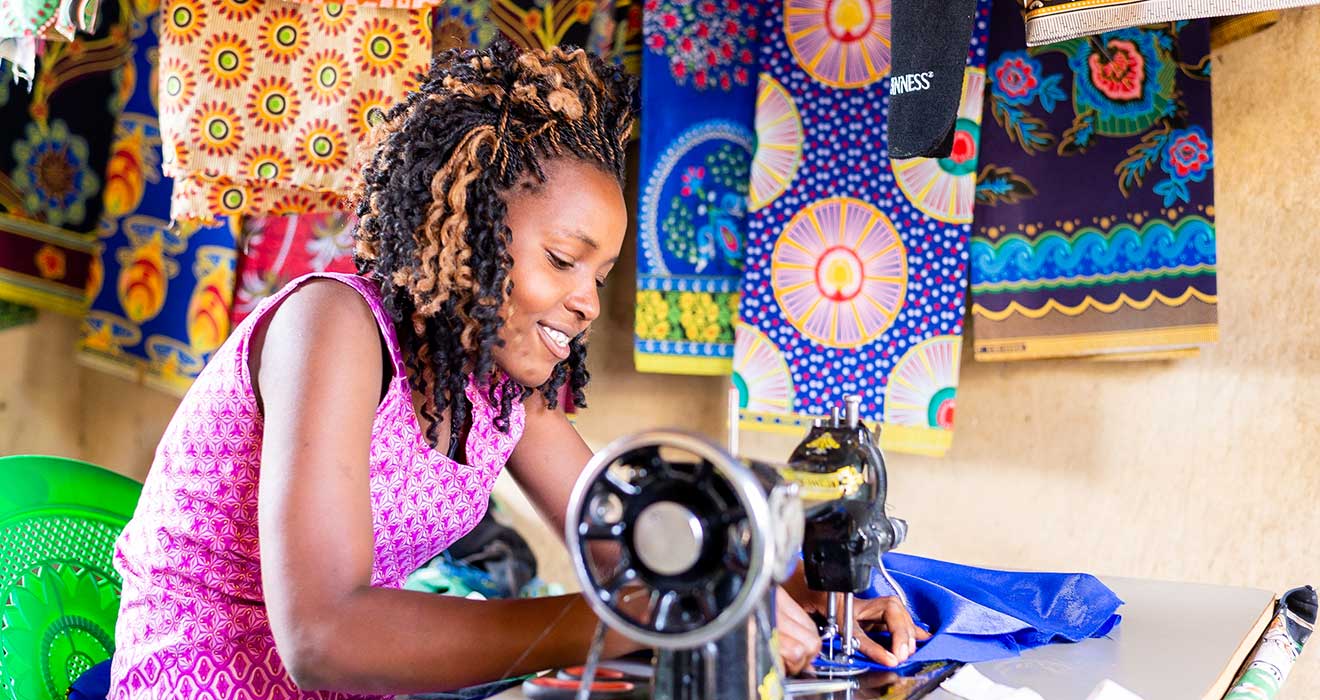In this two-minute video, learn how Amina, a young woman in Kenya, successfully and happily escapes poverty through the BRAC Ultra-Poor Graduation program: https://www.youtube.com/watch?v=6d7C9X7WXjY.
------
As the pioneer and largest implementer of a proven approach, BRAC has already reached over 2.1 million households in Bangladesh, empowering 95 percent of participants to “graduate” from extreme poverty. With our track record of success, we are well-positioned to expand our operations and impact.
BRAC UPGI partners with governments, policymakers, multilaterals, and civil society to expand adoption of our proven approach worldwide and enact local and global policy changes that better serve people living in extreme poverty:
Maximizing National Impact
"We have worked with government partners such as the Philippines, Kenya, Zambia, India, and Pakistan to adapt and integrate our approach into existing programs and policies and with civil society and local communities to sustain local efforts to eradicate extreme poverty.
Shaping Global Efforts
"Our work with strategic partners around the world ensures global and regional policies and programs focus on the needs of people living in extreme poverty."
-----
From the article linked below on how the World Bank identifies programs for people living in poverty. BRAC is a major partner across the world in doing so. The video link also helps to explain.
"While governments face significant obstacles in designing and delivering approaches for people living in extreme poverty, a substantial body of research shows that programs can achieve transformative impact by addressing the socioeconomic barriers that often exclude this population. An increasing number of governments are adopting and scaling economic inclusion programs, including Graduation programs, to address the multidimensional vulnerabilities of people living in extreme poverty. By integrating the Graduation approach into their poverty reduction initiatives, governments can increase the impact and scale of their initiatives by investing in the systems, processes, and capacities needed to reach those furthest behind and deliver multidimensional, timebound, and sequenced program interventions. This In Practice paper shares insights and learning from four non-governmental organizations on the potential to scale up government-led Graduation programs for people living in extreme poverty. It contributes to the growing policy space around economic inclusion and identifies good practices for designing and implementing government-led Graduation programs. It makes recommendations and identifies key considerations for governments on how to identify, reach, and deliver impactful programming to individuals and households facing socioeconomic exclusion and marginalization."

From the article linked below on how the World Bank identifies programs for people living in poverty. BRAC is a major partner across the world in doing so. The video link also helps to explain.
"While governments face significant obstacles in designing and delivering approaches for people living in extreme poverty, a substantial body of research shows that programs can achieve transformative impact by addressing the socioeconomic barriers that often exclude this population. An increasing number of governments are adopting and scaling economic inclusion programs, including Graduation programs, to address the multidimensional vulnerabilities of people living in extreme poverty. By integrating the Graduation approach into their poverty reduction initiatives, governments can increase the impact and scale of their initiatives by investing in the systems, processes, and capacities needed to reach those furthest behind and deliver multidimensional, timebound, and sequenced program interventions. This In Practice paper shares insights and learning from four non-governmental organizations on the potential to scale up government-led Graduation programs for people living in extreme poverty. It contributes to the growing policy space around economic inclusion and identifies good practices for designing and implementing government-led Graduation programs. It makes recommendations and identifies key considerations for governments on how to identify, reach, and deliver impactful programming to individuals and households facing socioeconomic exclusion and marginalization."
Box 2. How does BRAC target program beneficiaries?
To identify excluded populations living in extreme poverty, many BRAC programs use a vulnerability assessment to identify the characteristics of poverty in the region, then verify them with communities by wealth-ranking members of each village in a target area, followed by verification surveys. Community wealth-ranking draws on qualitative inputs from community members based on publicly known factors such as neighbors’ housing materials and perceived status in the community. Verification surveys probe further with questions on indebtedness; unstable or dangerous sources of income; dependency on seasonal labor; receipt of remittances; whether the household is headed by a woman; the presence of dependents (children, older people, someone with a disability); membership in an indigenous or minority group; being affected by displacement; having inadequate or interrupted access to basic needs such as water, healthcare, and education; and social exclusion. These targeting processes attempt to understand the situation of potential participants in a multidimensional way based on more than just economic criteria.
Participatory wealth-ranking exercises can help generate community buy-in. They also risk inflaming tensions in communities, however, especially if certain social groups are perceived to be disproportionately likely or unlikely to be selected as participants (BRAC
UPGI 2021c).
To deliver Graduation programs at scale, governments and development partners often rely on social registries—information systems that support outreach, intake, registration, and determination of potential eligibility for social programs. Social registries may be out of date, inaccurate, too narrowly focused on economic indicators of poverty,or incomplete, lacking coverage of isolated areas or transient communities altogether.
Because of these problems, poverty-targeted programs in low- and middle-income countries frequently miss more than half of the poorest quintile of the population (Kidd and Athias 2020). The impacts of these gaps are severe: 79 percent of the poorest quintile of the population in low-income countries receive no social assistance of any kind (Parekh and Bandiera 2020).
